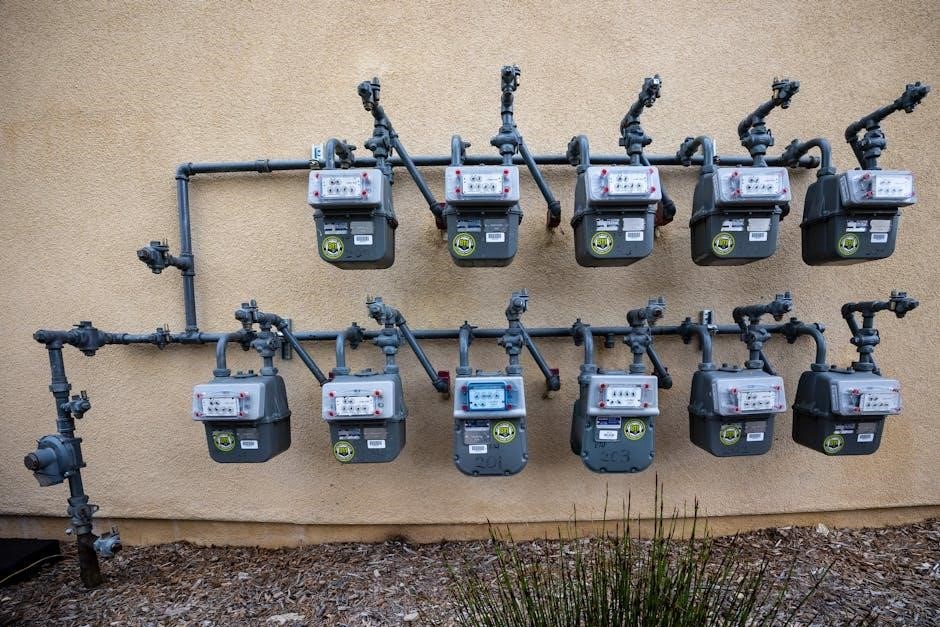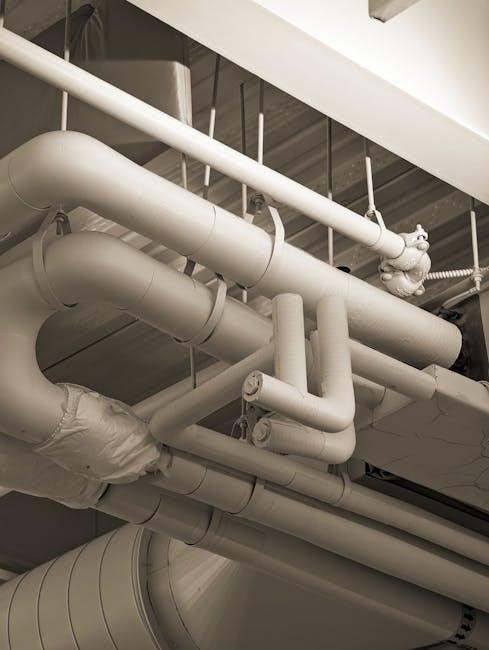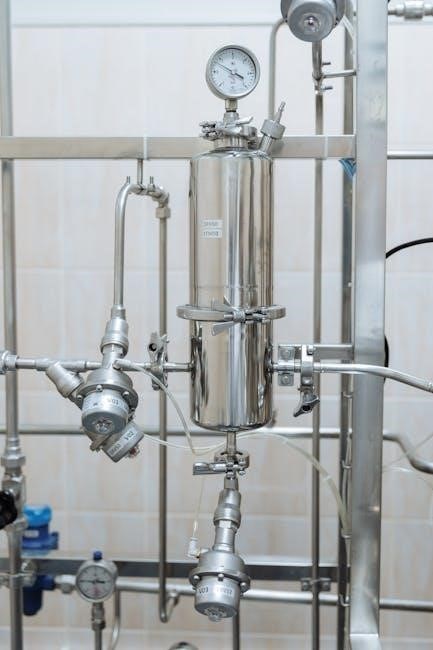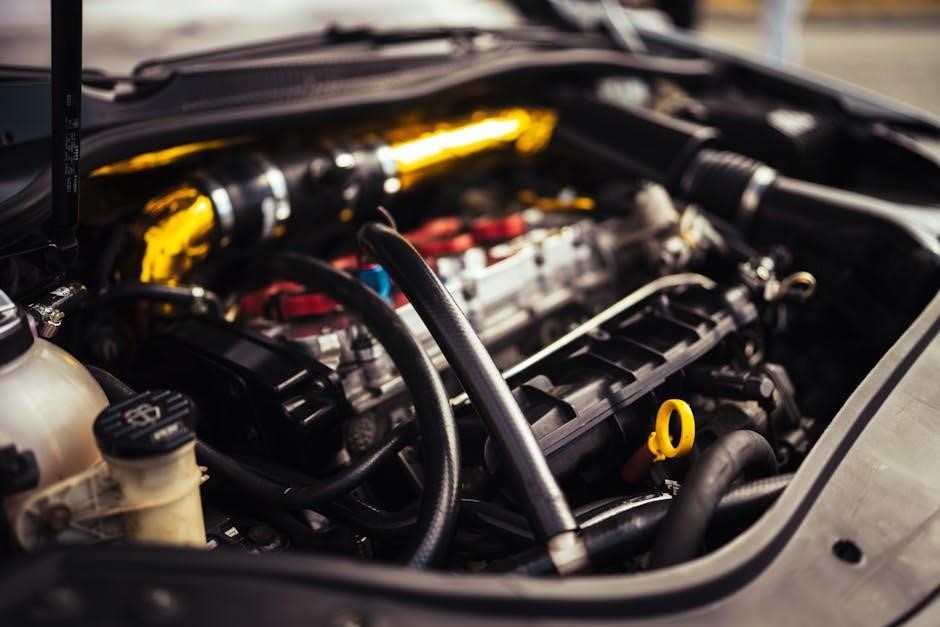The FASS Titanium Signature Series fuel system is designed to enhance fuel delivery and filtration for 5.9L Cummins engines, ensuring optimal performance and longevity.
1.1 Importance of Upgrading the Fuel System
Upgrading the fuel system is crucial for maximizing the performance and longevity of your 5.9 Cummins engine. The stock fuel system often struggles to meet the demands of high-performance engines, leading to issues like low fuel pressure and poor fuel delivery. A high-quality aftermarket system like FASS ensures consistent fuel flow, improved filtration, and better engine reliability. This upgrade is especially vital for engines with high mileage or those modified for increased power. By addressing these limitations, you can enhance your engine’s overall efficiency, reduce the risk of premature wear, and ensure optimal performance under various driving conditions.
1.2 Overview of the FASS Titanium Signature Series
The FASS Titanium Signature Series is a premium fuel system designed for 5.9L Cummins engines, offering high-flow capabilities and advanced filtration. This system features a robust titanium-coated gear rotor, ensuring durability and resistance to wear. It delivers fuel at a consistent pressure, supporting high-performance applications and improving engine reliability. The series includes models with varying flow rates, such as 95GPH and 165GPH, catering to different engine needs. With a lifetime warranty and compact design, the Titanium Signature Series is a popular choice for truck owners seeking a reliable, high-efficiency fuel solution to maximize their engine’s potential.

Pre-Installation Preparation
Ensure proper vehicle preparation, tool availability, and pump selection for your 5.9L Cummins engine to guarantee a smooth and safe FASS fuel system installation process.
2.1 Choosing the Correct FASS Pump for Your Engine
Selecting the right FASS pump is critical for your 5.9L Cummins engine. Consider factors like fuel pressure, flow rate, and engine specifications. The Titanium Signature Series offers models like the TS D07 95G, designed for high performance. Ensure the pump matches your engine’s year and application to avoid damage. Incorrect selection can lead to poor performance or engine harm. Always consult the FASS compatibility chart or manufacturer guidelines for precise matching. This step ensures optimal fuel delivery and system efficiency, tailored to your Cummins engine’s needs.
2.2 Essential Tools and Materials Needed
Before starting the FASS installation, gather essential tools like wrenches, pliers, screwdrivers, and fuel line cutting tools. Ensure you have replacement fuel line fittings, seals, and a suction tube kit if applicable. A fuel pressure test kit is necessary for final checks. Proper safety gear, including gloves and eye protection, is crucial. All components should be cleaned and flushed to prevent debris contamination. Refer to the FASS installation manual for specific recommendations, ensuring you have everything ready for a smooth process. This preparation minimizes delays and ensures a successful installation.

2.3 Safety Precautions and Vehicle Preparation
Always read the entire installation manual before starting. Ensure the vehicle is on level ground and apply the parking brake. Disconnect the battery to prevent electrical hazards. Wear protective gear like gloves and safety glasses. Drain the fuel tank if necessary, following proper safety protocols. Ensure all fuel lines are clear of debris by blowing them out. Secure the vehicle to prevent any movement during installation. Check for any leaks in the existing fuel system before proceeding. Properly dispose of any drained fuel and materials. Ensure good ventilation to avoid inhaling fumes. Follow all manufacturer guidelines to avoid engine damage.

Installation Process
The FASS fuel system installation involves installing the electrical harness, mounting the fuel system, installing the fuel line, checking fuel pressure, and performing final installation checks.
3.1 Step 1: Installing the Electrical Harness

Installing the electrical harness is the first step in the FASS fuel system installation. Locate the harness components, including the power and ground wires, and ensure they are properly routed away from heat sources and moving parts. Connect the positive wire to the battery or an ignition-switched power source, and secure the ground wire to a clean metal surface. Follow the manufacturer’s wiring diagram to avoid errors. Properly securing the harness prevents damage and ensures reliable operation. Always double-check connections before proceeding to the next step to avoid potential electrical issues. This step is critical for the system’s functionality and safety.
3.2 Step 2: Mounting the Fuel System
Mounting the FASS fuel system securely is essential for proper operation. Begin by positioning the pump assembly at the predetermined location, ensuring it is level and clear of obstructions. Check the fitment and mark the mounting holes on the frame or bracket. Drill pilot holes if necessary and install the provided hardware to secure the system. Tighten all bolts firmly to prevent vibration-related damage. Ensure the system is stable and evenly balanced to maintain optimal performance. Once mounted, verify that all fuel lines and electrical connections remain accessible for the next steps. Proper mounting ensures reliability and prevents potential issues during operation.
3.3 Step 3: Installing the Fuel Line
Installing the fuel line requires precision to ensure proper fuel flow and system performance. Begin by cutting the existing fuel line at the specified location, ensuring clean, debris-free ends. Use the provided 1/2″ fuel line and connectors to link the FASS system to the engine’s fuel port. Secure the line with brackets or clips to prevent vibration damage. Route the line away from heat sources and moving components. Double-check all connections for tightness and alignment. Proper installation ensures consistent fuel delivery and prevents leaks or restrictions. Once installed, proceed to the next step to set the fuel pressure and finalize connections.
3.4 Step 4: Checking and Setting Fuel Pressure
After installing the fuel line, the next step is to check and set the fuel pressure. Locate the pressure gauge provided with the FASS system and connect it to the designated port on the fuel system. Turn the ignition to the “on” position without starting the engine to pressurize the system. Record the pressure reading and adjust the regulator as needed to match the recommended pressure for your 5.9L Cummins engine, typically between 15-18 PSI. Ensure all connections are secure and free from leaks. Proper fuel pressure is critical for optimal engine performance and preventing damage to fuel system components.
3.5 Step 5: Final Installation Checks
Once all components are installed, perform a final inspection to ensure everything is securely connected and properly routed. Start the engine and allow it to run at idle for a few minutes. Check for any signs of leaks around fittings, connections, and lines. Verify that the fuel system is functioning quietly and efficiently. Ensure the electrical connections are secure and free from corrosion; Double-check the fuel pressure setting to confirm it matches the recommended specification for your 5.9L Cummins engine. Proper completion of these final checks ensures reliable performance and prevents potential issues down the road.

Post-Installation Testing and Inspection
After installation, prime the fuel system to remove air bubbles and verify proper fuel flow. Check for leaks at connections and ensure all lines are secure.
4.1 Fuel System Priming and Bleeding
Priming the fuel system ensures the removal of air bubbles and proper fuel flow. Locate the priming valve, typically near the fuel filter, and turn it clockwise to activate. Allow the system to prime for 3-5 minutes until fuel flows freely. Check for any leaks during this process. If air remains, repeat the priming steps. Ensure the fuel filter is properly seated and tightened to avoid any contamination. Bleeding the system may require multiple cycles to achieve optimal performance. Refer to the FASS manual for specific instructions tailored to your system configuration.
4.2 Verifying Fuel Pressure and Flow
After installation, use a fuel pressure gauge to ensure the system operates within the recommended range, typically around 15 PSI for optimal performance. Monitor the flow rate to confirm it matches the FASS pump’s specifications, such as 95 GPH. Check for pressure fluctuations while the engine is running and under load. A stable reading indicates proper function. If pressure drops or spikes, inspect connections and lines for leaks or blockages. Ensure the fuel filter is clean and properly installed to maintain consistent flow. Refer to the FASS manual for specific pressure and flow guidelines tailored to your system configuration.
4.3 Inspecting Connections and Lines
A thorough inspection of all connections and fuel lines is essential to ensure the FASS system functions correctly. Check for any signs of leaks, damage, or loose fittings. Use a torque wrench to verify that all connections are securely tightened to the recommended specifications. Inspect the fuel lines for kinks, abrasions, or blockages, which could restrict flow. Ensure all electrical connectors are clean and securely attached. If any issues are found, address them immediately to prevent fuel system failure. Regular inspections help maintain system performance and prevent potential problems down the road.

Maintenance and Troubleshooting

Regular maintenance ensures optimal performance. Inspect fuel lines, filters, and connections for wear or damage. Address common issues like low fuel pressure or contamination promptly.
5.1 Regular Maintenance Tips
Regular maintenance is crucial for ensuring the FASS fuel system operates efficiently. Start by flushing all brass fittings and fuel lines to remove debris. Inspect connections and lines for signs of wear or damage, addressing any issues promptly. Replace fuel filters every 10,000 to 15,000 miles to maintain proper flow and filtration. Monitor fuel pressure regularly to ensure it aligns with the recommended specifications. Additionally, check the electrical connections for corrosion or loose wires. Finally, inspect the pump and motor for any unusual noises or vibrations, which could indicate impending issues. By following these tips, you can extend the lifespan of your FASS system.

5.2 Common Issues and Solutions
Common issues with the FASS fuel system include low fuel pressure, air in the fuel lines, and faulty electrical connections. To address low fuel pressure, ensure the system is properly primed and check for blockages in the fuel lines. Air in the system can be resolved by bleeding the lines thoroughly after installation. Faulty connections should be inspected and tightened or replaced if necessary. Excessive noise from the pump may indicate improper installation or wear, requiring realignment or replacement of worn components. Regularly cleaning or replacing fuel filters can prevent contamination and maintain optimal performance.
Upgrading to the FASS Titanium Signature Series fuel system for your 5.9L Cummins engine is a proven way to enhance performance, reliability, and longevity. By following the installation guide and maintaining the system regularly, you can ensure optimal fuel delivery and filtration. Proper installation and regular checks will help prevent common issues and keep your engine running at its best. With improved fuel flow and pressure, your Cummins engine will deliver consistent power and efficiency, making it a worthwhile investment for any diesel enthusiast or professional. Always refer to the official installation manual for specific details and warranty information.
